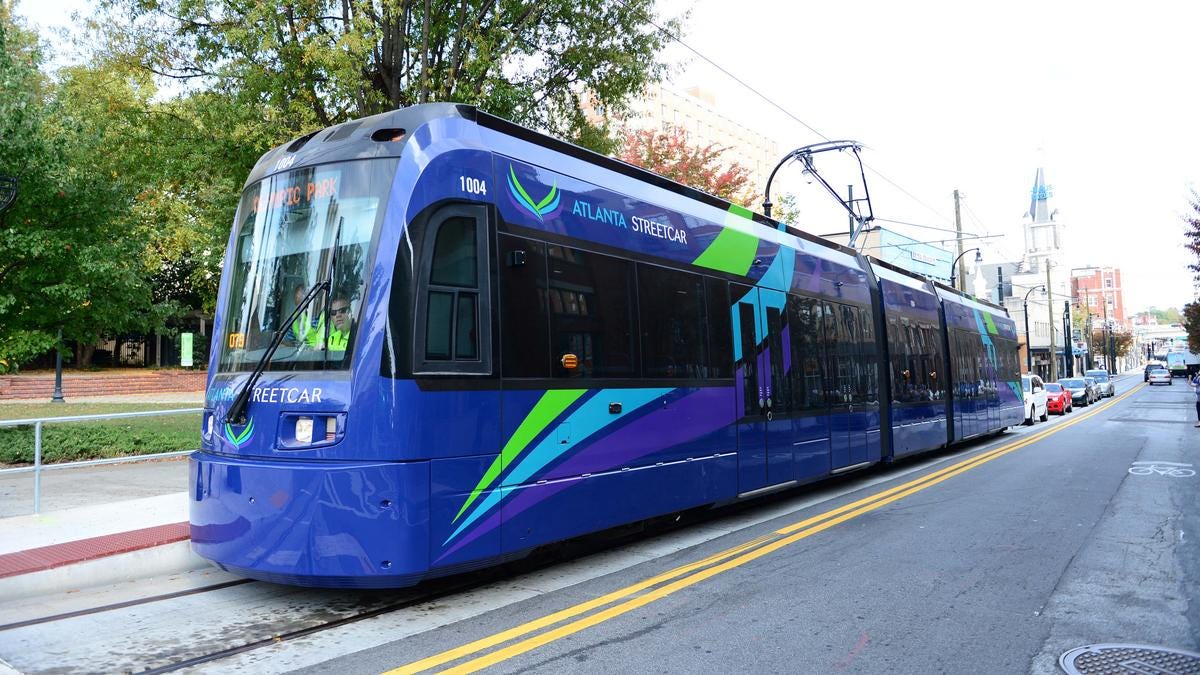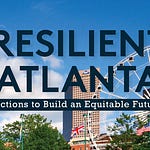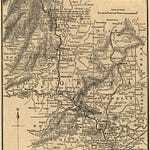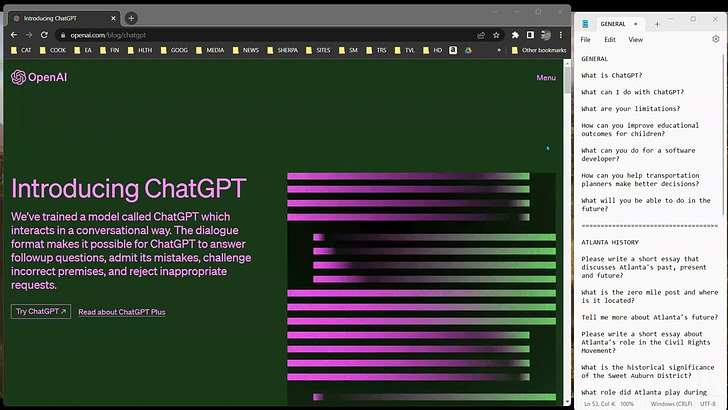This story originally appeared in the June 2021 episode of Exploring Atlanta. Please use the player below to listen to the audio portion of the podcast. Thank you.
Backstory
The Streetcar East Extension project is the first extension of the existing downtown Streetcar, originally opened in late 2014. This project runs along Edgewood Avenue to the BeltLine at Irwin Street and up to the Poncey-Highland neighborhood.
The Siemens S70 Streetcar weighs about 48 tons (96,500 lbs)
In 2018, MARTA formally took on ownership of the existing downtown Streetcar and future expansions of the streetcar system. The Streetcar East Extension project is advancing based on a detailed review of the planning and design work prepared by Atlanta BeltLine, Inc. (ABI) on behalf of the City of Atlanta (COA). Preliminary engineering of this corridor continues to advance considering possible effects to adjacent properties, existing utilities, vehicle and operational needs, neighborhood accessibility, and proposed stop locations. This project has advanced with continued coordination with CoA and ABI. Source: MARTA
The video below is a recording of the March 27, 2021, which I reference in my June 2021 podcast. If you watch this video first, my comments will make more sense.
“We are talking about a 90-ton vehicle travelling 2 to 25 miles per hour inside the Beltline corridor” — Beltline Official
Mass transit, also called mass transportation, or public transportation, the movement of people within urban areas using group travel technologies such as buses and trains. The essential feature of mass transportation is that many people are carried in the same vehicle (e.g., buses) or collection of attached vehicles (trains). This makes it possible to move people in the same travel corridor with greater efficiency, which can lead to lower costs to carry each person or—because the costs are shared by many people—the opportunity to spend more money to provide better service, or both. — Encyclopedia Britannica

My thoughts…
The narration for this segment begins at 14:25 in the audio recording above
Beltline = Mass transit
Solution looking for a problem?
Throwing good money after bad?
Low (mass transit) priority vs other areas
Construction disruption
EV, AV and AI technologies are advancing faster than many realize
These disruptive technologies will alter mobility needs and habits
A LOT has changed since 1999
Are we better off employing more flexible, scalable options such as BRT?
MARTA is seeking public input now
Today's era is one of unprecedented disruptive innovation in mobility. Many transportation agencies’ processes and procedures are rooted in the mid-20th century and could be ill-suited to today’s rapidly evolving landscape. In the last decade alone, the transportation ecosystem has expanded to include transportation network companies, ride-hailing, car-sharing, bike-sharing, micromobility, and micro-transit, as well as digital trip planning, ticketing, and payment. At the same time, changes in commuting habits and demographic shifts are altering the economics of mass transit.
Traditional transportation agencies aren’t built for rapid innovation. Their typical decades-long planning cycles and procurement processes and workforce systems tend to be incompatible with many new approaches—and could hinder their ability to thrive in the future of mobility.
— Deloitte, from Transportation Agency of the Future: Managing mobility amid disruption and digitization (Aug 2020)
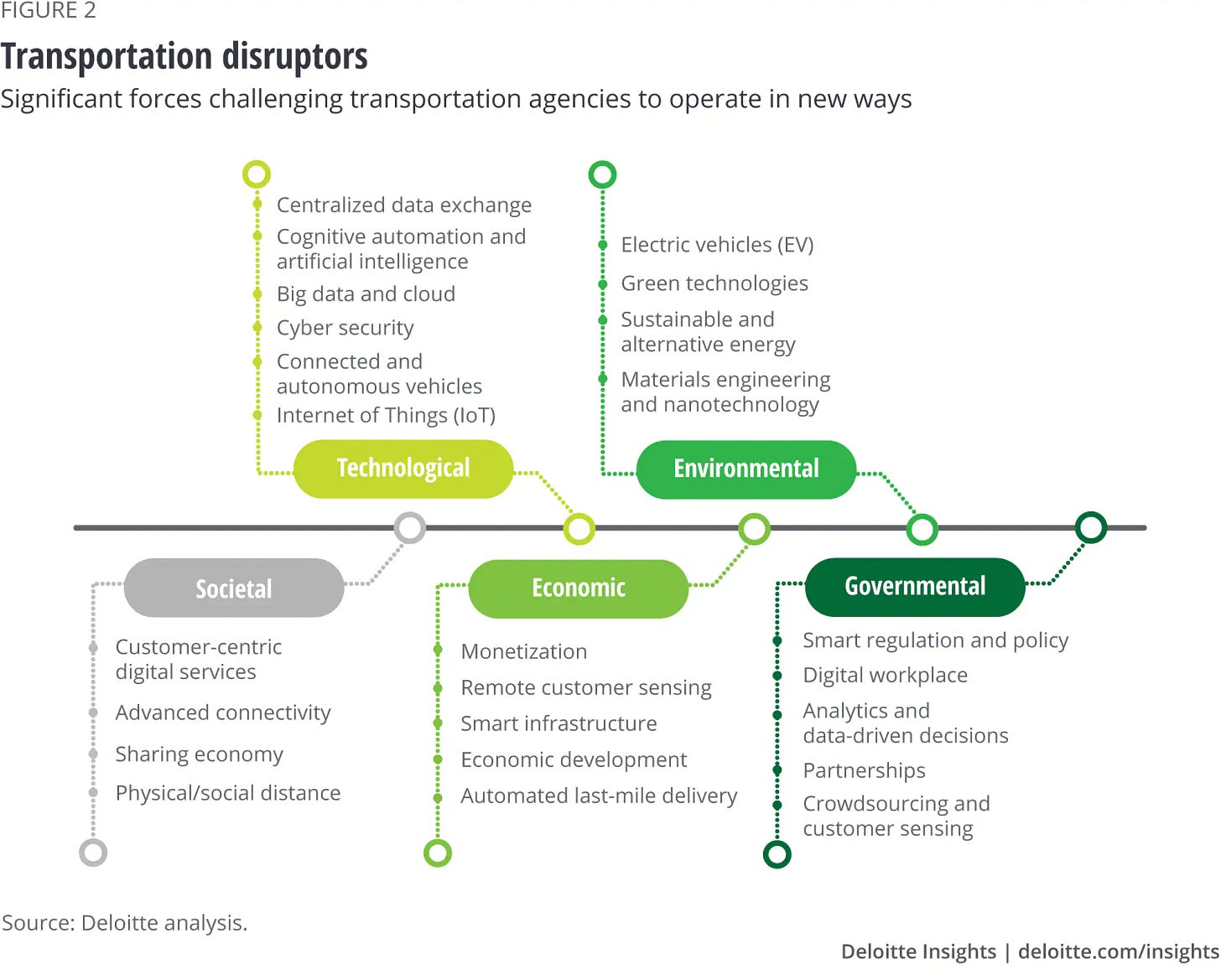
Recent News (2023)
MARTA sidelines streetcars over safety concerns — Fox 5 News, 01.04.23
MARTA dismisses Josh Rowan from leadership position — Atlanta Business Chronicle, 01.06.23
Some MARTA officials question Atlanta Streetcar extension — AJC, 01.26.23
MARTA addresses City Council committee on alleged budget shortfall: What we learned — 11 Alive, 01.26.23
A streetcar on the Beltline would be a train wreck — Saporta Report, 01.27.12
MARTA board uncertain over Atlanta Streetcar extension — Atlanta Business Chronicle (02.10.23)
Atlanta Streetcar: Grand Plans and Failed Ambitions — Georgia Public Policy Foundation, 02.16.23
Atlanta businesses wary of extending streetcar to BeltLine — Atlanta Business Chronicle, 02.24.21
Neighbors air grievances about proposed Atlanta Streetcar extension — Atlanta News First, 02.24.23
OPINION: Beltline rail: Will spending $230 million screw up a good thing? — AJC, 03.25.23
OPINION: Beltline visionary gets testy with opponent as rail up for vote — AJC, 07.07.23




